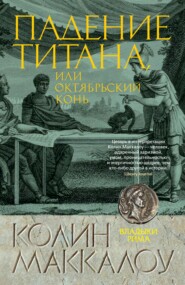По всем вопросам обращайтесь на: info@litportal.ru
(©) 2003-2024.
✖
On, Off
Автор
Год написания книги
2018
Настройки чтения
Размер шрифта
Высота строк
Поля
“Cathy, we’re not short of a dime! No kids of our own—for why do we need to worry about money? What are your nieces and my nephews going to do about this place, huh? Sell it, Cathy, sell it! So let’s get all the fun we can out of it first.”
“Okay, okay, grow your mushrooms! Only don’t say I didn’t warn you!”
He smiled, reached over to squeeze her roughened hand. “I promise I won’t gripe if it fails, but I just don’t think it is going to fail.”
Chapter Two (#ulink_9e7ddef8-c461-5fab-bf7d-5f593e3ad004)
CARMINE’S DAY BEGAN IN Commissioner John Silvestri’s office, where he sat in the middle of a semi-circle around the desk. On his left were Captain Danny Marciano and Sergeant Abe Goldberg, on his right Dr. Patrick O’Donnell and Sergeant Corey Marshall.
Not for the first time by any means, Carmine thanked his lucky stars for the two men senior to himself in the hierarchy.
Dark and handsome, John Silvestri was a desk cop, had always been a desk cop, and confidently expected that when he retired in five years’ time, he would be able to say that he had never drawn his side arm in a fracas, let alone fired a rifle or a shotgun. Which was odd, since he had joined the U.S. Army in 1941 as a lieutenant and emerged in 1945 bedaubed with decorations, including the Medal of Honor. His most irritating habit concerned cigars, which he sucked rather than smoked, leaving slimy butts in his wake to impart an odor to the air Carmine fancied might resemble the odor given off by a spittoon in an 1890s Dodge City saloon.
Fully aware that Danny Marciano hated the cigar butts most, Silvestri loved to push his ash tray under Marciano’s snub nose; north Italian blood had given Marciano a fair and freckled complexion and blue eyes, and sitting at a desk had given him a few extra pounds. A good second man who lacked the cunning patience to wind up Commissioner.
They left Carmine and his two fellow lieutenants to get on with the real police work, ignored political pressures from Town, Gown and Hartford, and could be relied upon to go to bat for their men. That Carmine was their favorite everybody knew; hardly any resentment stemmed from that fact because what it really meant was that Carmine inherited the ticklish cases requiring diplomacy or liaison with other law enforcement agencies. He was also the department’s top murder man.
He had just finished his freshman year at Chubb when Pearl Harbor was attacked, so he postponed his education and enlisted. By sheer chance he was seconded to the military police, and once he got past guard duty and arresting drunken soldiers he found that he loved the work; there were as many violent or crafty crimes in the teeming wartime Army as on the streets of any city. When the War and an occupation stint in Japan were over, he was a major, eligible to complete his degree at Chubb under an accelerated program. Then, a sheepskin in his hand that would have let him teach English literature or mathematics, he decided that he liked police work best. In 1949 he joined the Holloman Police. Silvestri, a desk bound lieutenant at the time, soon spotted his potential and put him in Detectives, where he was now the senior lieutenant. Holloman was not big enough to have a homicide squad or any of the subdivisions larger city police forces had, so Carmine might find himself working all kinds of crime. However, murder was his speciality and he had a formidable solve rate: just about a hundred per cent—not all convicted, of course.
He sat looking eager yet relaxed; this would be juicy.
“You go first, Patsy,” said Silvestri, who disliked the Hug case already because it was certain to become high profile. Only a small paragraph in the Holloman Post this morning, but as soon as the details leaked, it would be front page news.
“I can tell you,” said Patrick, “that whoever dumped the torso in the Hug’s dead animal refrigerator left no fingerprints, fibers or any other trace of himself. The victim is in her middle teens, and has some colored blood. She’s small in size, and she looks well cared for.” He leaned forward in his chair, eyes glistening. “On her right buttock she has a heart-shaped scab. A nevus, removed around ten days ago. However, it wasn’t a pigmented birthmark, it was a hemangioma—a tumor made up of blood vessels. The killer used a pair of diathermy forceps to nip off every feeder to the growth, coagulate it. Must have taken him hours. Then he packed it with gelfoam to assist clotting, and after that he let the wound crust over, get nice and dry. I found traces of what I thought was an oil-based ointment, but it wasn’t.” He drew a deep breath. “It was grease-paint exactly the same color as her skin.”
Carmine’s own skin began to creep; he shivered. “She still didn’t look perfect after he removed the birthmark, so he covered it with grease-paint to make her perfect. Oh, Patsy, this is one weird dude!”
“Yeah,” said Patrick.
“So he’s a surgeon?” asked Marciano, pushing Silvestri’s ash tray and its contents away from his nose.
“Not necessarily” from Carmine. “Yesterday I talked to a lady who does microsurgery on the Hug’s animals. She doesn’t have a medical degree. There are probably dozens of technicians in any big center for research like the Chubb Medical School who can operate as well as any surgeon. For that matter, until Patsy just told us how the guy coagulated the bleeding nevus, I was considering butchers and slaughtermen. Now I think I can safely rule them out.”
“But you do think that the Hug’s involved,” said Silvestri, picking up the disgusting cigar and sucking on it.
“I do.”
“What’s next?”
Carmine got up, nodding to Corey and Abe. “Missing Persons. Probably statewide. Holloman doesn’t have one on the files unless the killer held her for much longer than it took him to do what he did. Because we don’t know what she looked like, we’ll concentrate on the birthmark.”
Patrick walked out with him. “You won’t break this one in a hurry,” he said. “The bastard’s left you nothing to go on.”
“Don’t I know it. If that monkey hadn’t woken up in an ice house, we wouldn’t even know a crime had been committed.”
Holloman’s Missing Persons having yielded nothing, Carmine began to phone around the other police departments in the state. The State cops had found the body of a ten-year-old girl in the woods just off the Appalachian Trail—a big, part-colored child reported missing by camping parents. But she had died of a cardiac arrest, and there were no suspicious circumstances.
The Norwalk police came up with a missing sixteen-year-old girl of Dominican extraction named Mercedes Alvarez, who had disappeared ten days ago.
“Five feet tall, curly but not kinky dark hair, dark brown eyes—a real pretty face—mature figure,” said someone who had announced himself as Lieutenant Joe Brown. “Oh, and a large heart-shaped birthmark on her right buttock.”
“Don’t go away, Joe, I’ll be there in half an hour.”
He put the flashing light on the Ford’s roof and gunned the car down I–95, siren screaming; the forty miles took him slightly more than twenty minutes.
Lieutenant Joe Brown was around his own age, early forties, and more excited than Carmine had expected him to be. Brown was on edge, so were the other cops in the vicinity. Carmine studied the color photo in the file, looked for the reference to the birthmark, which some untutored hand had attempted to sketch.
“She’s our girl, all right,” he said. “Man, she’s pretty! Fill me in, Joe.”
“She’s a sophomore at St. Martha’s high school—good grades, no trouble, no boyfriends. It’s a Dominican family been here in Norwalk for twenty years—the father’s a toll collector on the Turnpike, the mother’s a housewife. Six kids—two boys, four girls. Mercedes is—was—the eldest. Youngest is three, a boy. They live in a quiet old neighborhood, mind their own business.”
“Did anyone see Mercedes abducted?” Carmine asked.
“No one. We busted our asses to find her because”—he paused, looked worried—“she was the second girl of that type to go missing within two months. Both sophomores at St. Martha’s, in the same class, friends but not bosom buddies, if you get me. Mercedes had piano practice after school finished, was due home at four-thirty. When she didn’t turn up by six and the nuns said she had definitely left when she was supposed to, Mr. Alvarez called us. They were already upset over Verina.”
“Verina was the first girl?”
“Yeah. Verina Gascon. A Creole family from Guadeloupe, been here a long time too. She disappeared on her way to school. Both familie s live within walking distance of St. Martha’s, just a block away in either direction. We ransacked Norwalk looking for Verina, but she’d gone without a trace. And now this one, the same.”
“Any possibility either girl took off with a secret boyfriend?”
“Nope,” Brown said emphatically. “Maybe you should see both families, then you’d understand better. They’re old-fashioned Latin Catholics, bring their kids up strict but with lots of love.”
“I’ll see them, but not yet.” said Carmine, shrinking inside. “Can you organize Mr. Alvarez to identify Mercedes on the basis of the birthmark? We can’t show him more than a tiny patch of skin, but he’ll have to know beforehand that—”
“Yeah, yeah, I get the job of telling the poor bastard that someone chopped his beautiful little daughter into pieces,” said Brown. “Oh, Jesus! Sometimes this is a shit job.”
“Would their priest be willing to go with him?”
“I’ll make sure. And maybe a nun or two for extra support.”
Someone came in with coffee and jelly donuts; both men wolfed down a couple, drank thirstily. While he waited for copies of the files of both girls, Carmine called Holloman.
Corey, said Abe, was already at the Hug, and he himself was about to see Dean Wilbur Dowling to find out how many dead animal refrigerators existed within the medical school.
“Did we get any other missing persons who might have fitted our girl’s description?” Carmine asked, feeling better for the food.
“Yeah, three. One from Bridgeport, one from New Britain, and one from Hartford. But when none of them had the birthmark, we didn’t follow up. They all happened months ago,” said Abe.
“Things have taken a turn, Abe. Call Bridgeport, Hartford and New Britain back, and tell them to send us copies of those files as fast as a siren can travel.”
When Carmine walked in, Abe and Corey got up from their desks and followed him into his office, where three files lay waiting. Down went the two files Carmine carried; he unclipped the five photographs, all in color, and laid them out in a row. Like sisters.
Nina Gomez was a sixteen-year-old Guatemalan girl from Hartford, and had disappeared four months ago. Rachel Simpson was a sixteen-year-old light-skinned black girl from Bridgeport, disappeared six months ago. Vanessa Olivaro was a sixteen-year-old girl from New Britain of mixed Chinese, black and white blood whose parents hailed from Jamaica; she had disappeared eight months ago.
“Our killer likes curly but not kinky hair, faces that are fantastically pretty in a certain way—full but well delineated lips, wide set and wide open dark eyes, a dimpled smile—a height of no more than five feet, a mature figure, and light but not white skin,” Carmine said, flicking the photos.
“You really think the same guy snatched them all?” Abe asked, not wanting to believe it.














